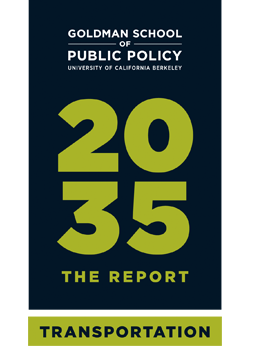Achieving 100 percent electric vehicle (EV) sales supported by a 90 percent clean electricity grid by 2035, as modeled in the DRIVE Clean Scenario, will require greater policy ambition and policymaker leadership. Accelerating Clean, Electrified Transportation by 2035: Policy Priorities is a companion report to the 2035 Report 2.0, and serves as a guide and reference for federal, state, and local policymakers. The report includes nearly 50 recommendations for action across six categories, and features policy recommendations to ensure the transition to electrified transportation is accessible, equitable, and just. Policymakers across all levels of government should focus on the policies that address near-term barriers, while also supporting the long-term transition to a zero-emission transportation system. The priority policy actions include:
Strong National and State Standards. Strong national fuel economy and tailpipe emissions standards for all vehicle classes, combined with state leadership in ZEV standards, will pave the road for market transformation, spur technology innovation, reduce local pollution, and lock in consumer savings. America needs strong standards to reduce greenhouse gas emissions in line with a 1.5 degree Celsius global target. These policies are the highest priority in terms of emissions reductions.
Equity-focused policies and programs designed with input from communities most adversely impacted by transportation pollution – namely communities of color in historically redlined neighborhoods, and frontline and underserved communities – will ensure all people benefit from cleaner, more efficient transportation solutions.
Targeted incentives (for vehicles and charging infrastructure) that ramp down over time as the market matures will encourage early adoption and drive down costs to benefit all consumers. Means-based incentives will help ensure low- and moderate-income consumers and small businesses also benefit. Consumer education programs will increase awareness of expanding EV model availability and suitability.
Investments in a ubiquitous charging network and a modern grid will address range anxiety and ensure reliability as the EV market grows. Meeting the mobility needs of families and businesses will boost consumer and business confidence in EVs for urban, rural, and long-distance trips.
Strong “Made in America” policies to encourage domestic manufacturing will help retool U.S. industries to manufacture batteries, EVs, energy storage, and other advanced technologies. An early focus on these policies will improve global competitiveness, sustain jobs, and support workers in the transition.
EV-friendly codes and procedures, combined with smart electric utility regulations will reduce soft costs and optimize transportation electrification for the benefit of EV owners, utility customers, and the grid. Efforts to streamline interconnection and integration of EVs in homes, businesses, and communities will pay dividends as demand grows.
An Executive Summary outlines all of the policy recommendations to achieve the DRIVE Clean Scenario.




